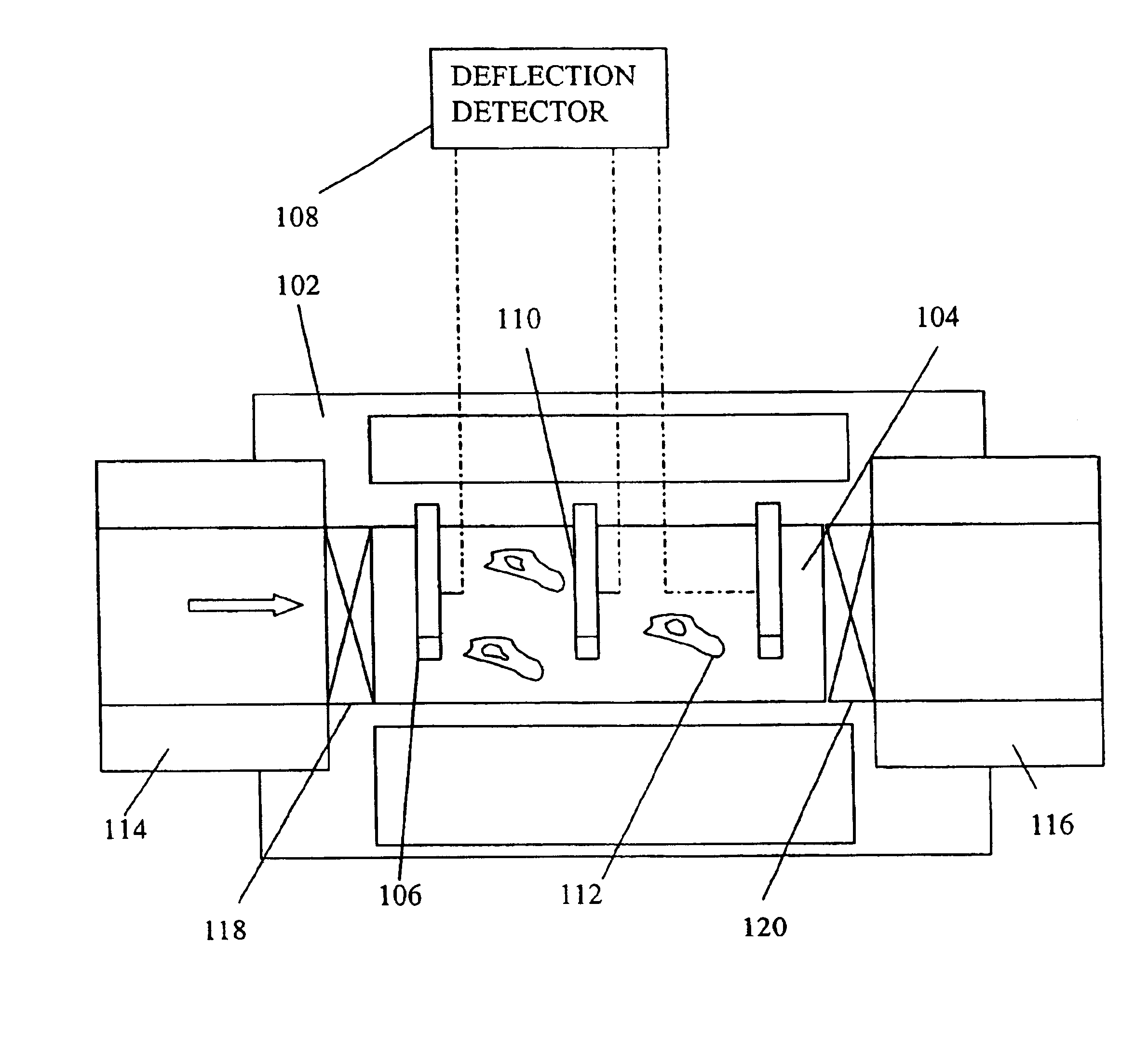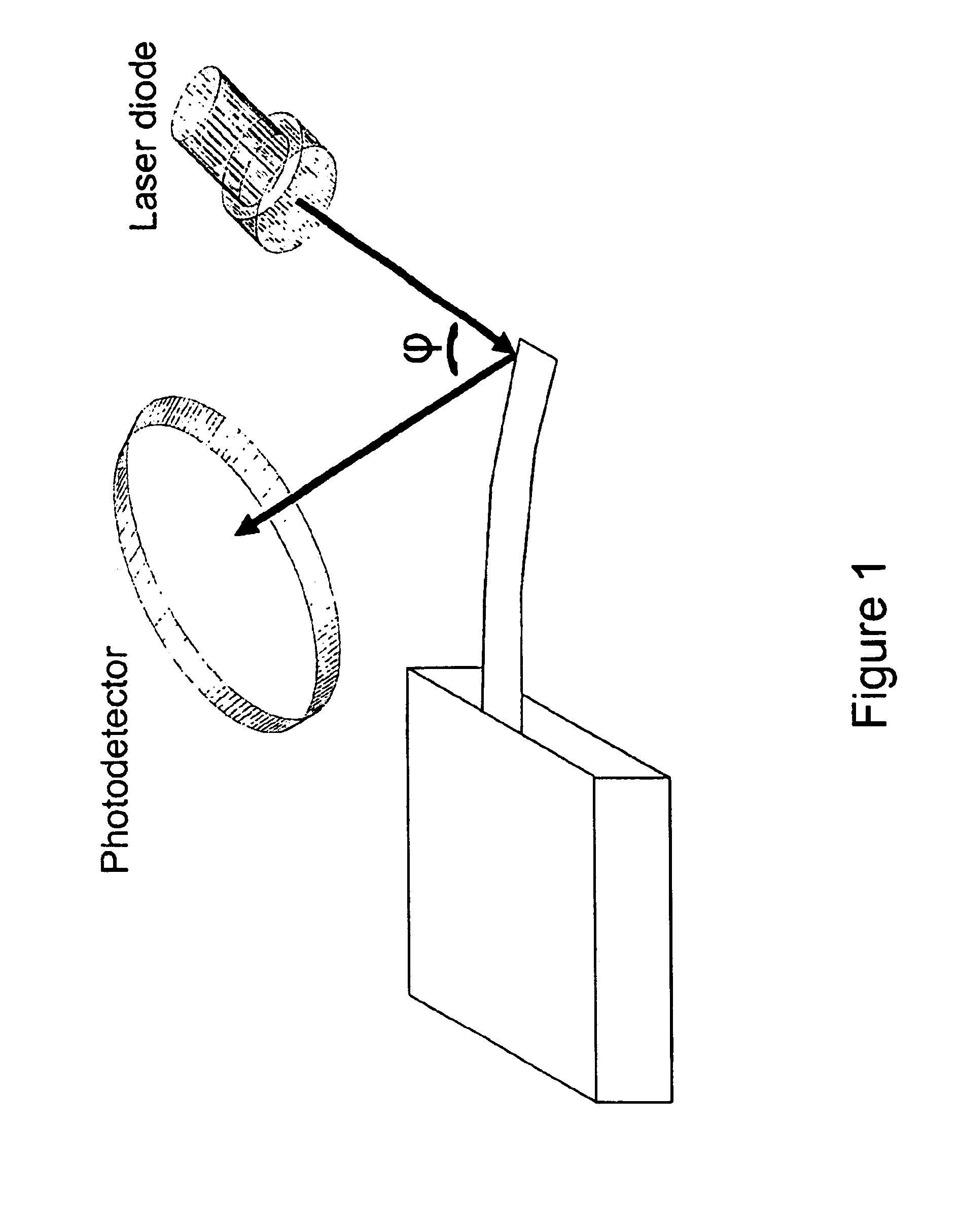Microscale sensor element and related device and method of use
- Summary
- Abstract
- Description
- Claims
- Application Information
AI Technical Summary
Benefits of technology
Problems solved by technology
Method used
Image
Examples
example
Experimental Procedure
[0109]Once a microcantilever was patterned with pH-sensitive hydrogel, the response of the patterned microcantilever to environmental pH variation was to be examined. Observation of the bending of the microcantilever with a change in pH would be proof of concept of a MEMS sensor based on a microcantilever patterned with an environmentally sensitive hydrogel.
[0110]A crosslinked poly(methacrylic acid) (PMAA) network containing significant amounts of poly(ethylene glycol) n dimethacrylate (PEGnDMA), where n is the average molecular weight of the PEG chain, exhibits a swelling dependence on environmental pH. The monomers used were methacrylic acid (MAA) and poly(ethylene glycol) dimethacrylate (PEGDMA). The initiator used for the UV free radical polymerization was 2,2-dimethoxy-2-phenyl acetophenone (DMPA), and adhesion was gained between the silicon substrate and the polymer using an organosilane coupling agent, γ-methacryloxypropyl trimethoxysilane (γ-MPS). The M...
PUM
 Login to View More
Login to View More Abstract
Description
Claims
Application Information
 Login to View More
Login to View More - R&D
- Intellectual Property
- Life Sciences
- Materials
- Tech Scout
- Unparalleled Data Quality
- Higher Quality Content
- 60% Fewer Hallucinations
Browse by: Latest US Patents, China's latest patents, Technical Efficacy Thesaurus, Application Domain, Technology Topic, Popular Technical Reports.
© 2025 PatSnap. All rights reserved.Legal|Privacy policy|Modern Slavery Act Transparency Statement|Sitemap|About US| Contact US: help@patsnap.com



